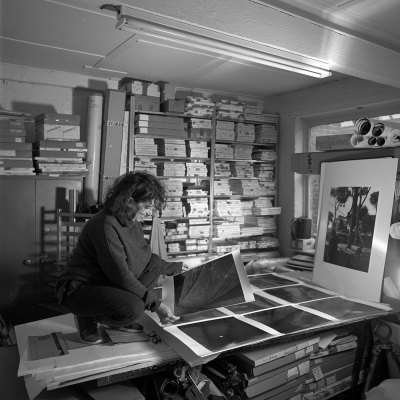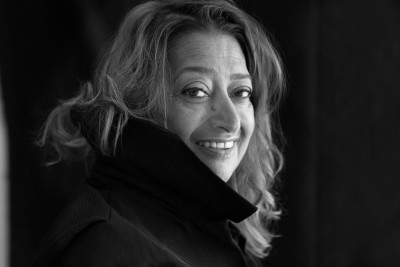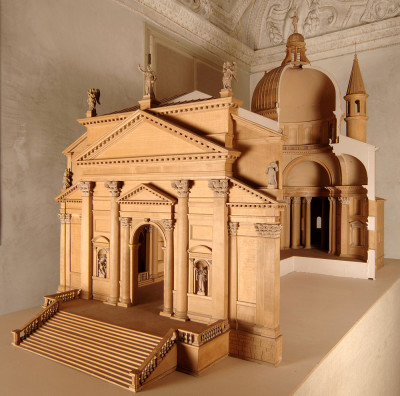Dame Zaha Hadid RA (1950 - 2016)
“A planet in her own inimitable orbit” was how the hugely influential architect Rem Koolhaas described Baghdad-born British citizen Zaha Hadid when she graduated after studying with him at the Architectural Association in the 1970s. Her magnificent drawings, which depicted familiar cities as if they had been re-imagined by Russian Constructivists, won her an immediate reputation as a visionary architect. Teaching, exhibitions and publications quickly spread her influence, and she seemed poised to make the breakthrough into building with a win for the Hong Kong Peak project in 1983. The complex inter-relationship between dramatic topography and dense urban development seemed tailor-made for her vision of warped and folding planes which move seamlessly from building to landscape. But it was not realised, and though powerful schemes such as a proposal for the redevelopment of Grand Buildings in Trafalgar Square in 1985, and Cardiff Bay Opera House a decade later kept her in the public eye and confirmed her status as an architectural prophet, they ended in disappointment too.
It took the Vitra Furniture Company, a noted patron of architecture, to give her an opportunity to build, with a small but visually extraordinary project completed in 1993 for a fire station at Weil-am-Rhein in Germany. Slowly at first but with increasing intensity since the turn of the millennium, Hadid began to turn her ability to win architectural competitions into realised buildings. In that time she worked on a formidable range of projects, from contemporary art museums – one in Cincinnati was completed in 2003, she began another in Rome in 1997 – to transport projects such as a tram station in Strasbourg and a high speed rail station outside Naples. Other commissions included a masterplan for part of Bilbao and a ski jump in Austria. She was the third Briton and first woman to win the prestigious Pritzker Prize for Architecture, taking her place alongside the late Jim Stirling, Norman Foster (qv), her erstwhile mentor Koolhaas and RA annual architecture lecturers like Renzo Piano, Alvaro Siza and Fumihiko Maki.
Hadid’s architecture has enormous energy which comes from several basic sources. One is a remarkable visual and representational ability, and this gave her an unusual level of insight into another ability - her command of mathematics, a subject in which she gained a degree before turning to architecture. In an age when powerful and innovative visualisations are as much part of architectural endeavour as completing buildings, and when the explosion of computing power means hitherto impossibly complex forms are now buildable, these dual abilities put Hadid at the forefront of architecture.
Profile
Born: 31 October 1950 in Baghdad, Iraq
Died: 31 March 2016
Elected RA: 25 May 2005
Gender: Female
Visit Dame Zaha Hadid RA (1950 - 2016)'s website
Preferred media: Architecture
Works by Dame Zaha Hadid in the RA Collection
1 results
-
Zaha Hadid was a force of nature. Her creative power and strong personality pushed architecture into a new territory that, not only produced seminal buildings, but raised public awareness and encouraged debate about the very nature of architecture.
Alan Stanton RA, architect and Chair of the Architecture Committee
-
Gallery
![Zaha Hadid RA, MAXXI: National Museum of XXI Century Arts, Rome, Italy, 2010: aerial view]()
Zaha Hadid RA, MAXXI: National Museum of XXI Century Arts, Rome, Italy, 2010: aerial view, 2010.








